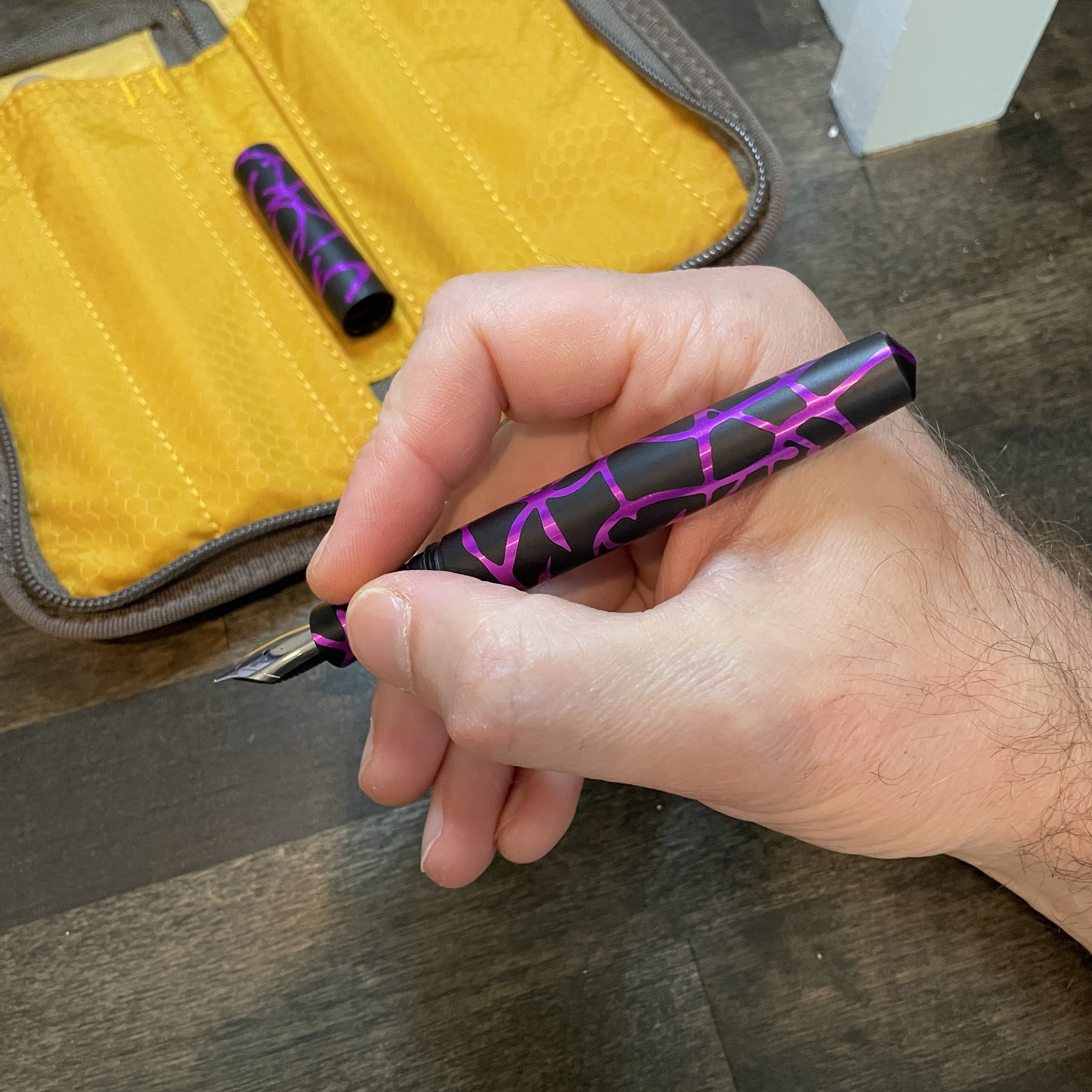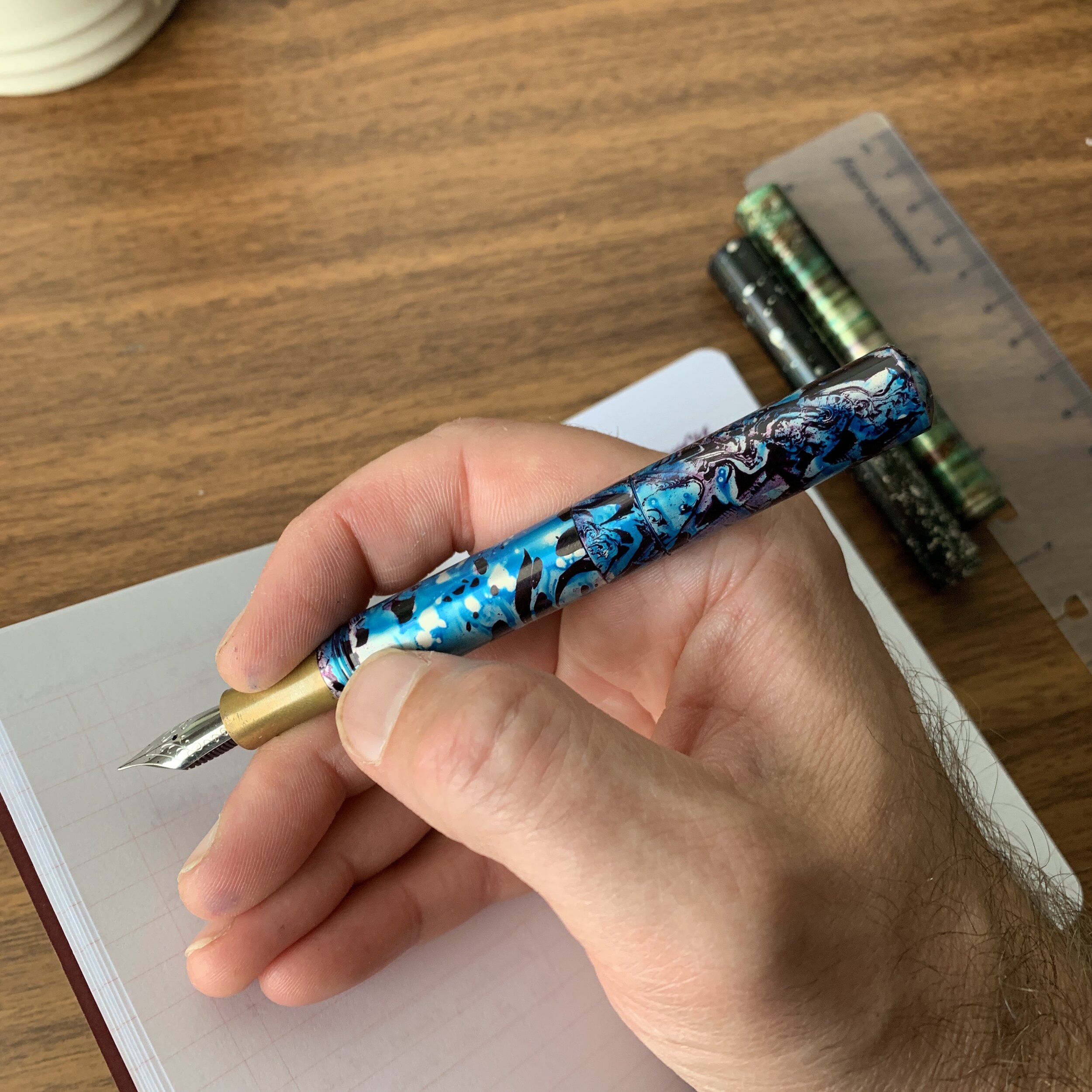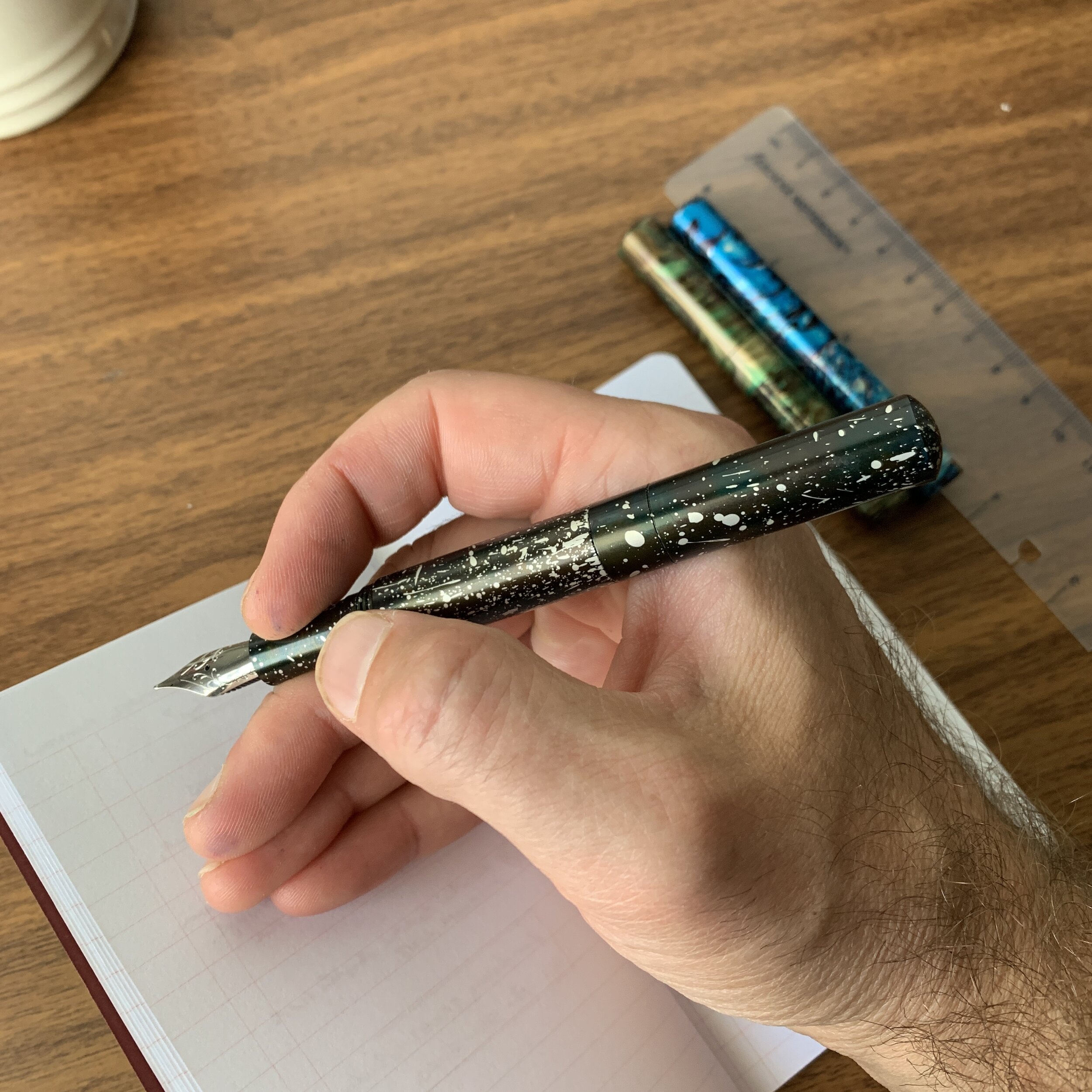I talk a lot about unintentionally accumulated “mini-collections,” where I buy a lot of a seemingly-random type of pen over a period of months (or years) and then decide that the accumulation wasn’t really random at all, but rather says something about my changing needs and work habits. Over the past two years, I — like the rest of the world — have been working remotely, either from home, or outside or in a corner of the local library. A recent review of my collection shows that since that first quarantine period in early 2020 (and probably starting slightly before that), I’ve picked up more metal pens, especially pocket pens, since they’re durable and useful for working on the go.
I’ve not been a huge proponent of machined or all-metal pens in the past, generally finding them heavy and awkward, but in recent years certain makers have revolutionized the writing experience by using different machining techniques to reduce weight and improve the ergonomics, particularly with respect to the grip section. If you enjoy the look of a machined pen, fountain or otherwise, you no longer have to sacrifice comfort and usability over long writing sessions. Today I’ll discuss a few considerations that I take into account when selecting a metal pen, all of which relate to their usability as daily writer (or “workhorse”).
The Baron Fig Squire in brass is quite heavy, but still comfortable to write with due to the contoured “teardrop” shape.
Balance
To me, the balance of a pen is far more important than the overall weight. A heavy, well-balanced brass pen can be more comfortable for me to use than an oversized resin pen that’s been manufactured solely for purposes of “looking big and expensive” without any concern for usability. I use the term “balance” to refer to how the pen sits in my hand when writing, but be aware a certain pen may feel different from person to person, depending on things like hand size and underlying conditions such as arthritis. Metal pens that I consider particularly well-balanced given my average hand size include the Baron Fig Squire, with it’s contoured shape that places most of the weight towards the middle-front, as well as the Schon Full-Size Fountain Pens, aluminum pens which are so light and well-balanced that you can even post the cap without sacrificing comfort - something you rarely see in the machined pen universe.
The Schon DSGN Full-Size Fountain Pen has become one of my favorite designs of all time. I know that’s lofty praise, but rarely a day goes by when I don’t use this particular model.
Weight Reduction Machining
Weight remains a significant consideration. In recent years, makers have been machining the walls of their pens thinner to control for this factor. Thus, while I consider balance to be more important overall, for something like a thicker fountain pen that has to be wide enough in diameter to hold a converter, you won’t be able to achieve good balance without paying close attention to weight, even with lighter materials such as aluminum and titanium. Favorite makers of mine who have done excellent work in this regard include Ian Schon (see the Full-Size Fountain Pen, discussed above), and Matthew C. Martin. Though not currently in production, the titanium version of the Gist 2.0 fountain pen by Tactile Turn is also a delight to use, as well as the bullet-style metal fountain pens made by Traveler’s Company (and the ballpoint).
A Comfortable Grip Section
When you mention “metal pens” to many fountain pen enthusiasts, they envision a smooth section that becomes slippery as you write for longer periods of time. While that problem still exists for those of us that tend to use a tighter grip, many companies have introduced a slight texture to their sections in the form of machined grooves or the application of a matte finish. One of the more comfortable sections I own, machined or not, is the longer, ridged section on my brass Schon DSGN Pocket Six.
I’m glad I sprung for the elongated grip section (though the standard smooth section is also excellent).
The end result of all this is that I no longer necessarily look at metal pens as occupying their own category or product segment, separate from "normal pens.” I find the pens mentioned here indistinguishable, usability-wise, from traditional celluloid, resin, or acrylic pens, and some are in fact even more comfortable. If you’ve been considering a metal pen, but have been put-off by potential weight issues, please reconsider, especially if you have the opportunity to test out one of these pens at a pen show or local pen club.
Further Reading
If you’re interested in reading more about the idea of “workhorse pens,” you can check out the rest of this series here. The “Workhorse Pens” series of blog posts explores those pens that I love to use for, well, actual work, and contains longer write-ups on how and why I enjoy these particular pieces from my collection.
I purchased all of the pens featured here with my own funds, for my own use. This post does not contain third-party affiliate links. The Gentleman Stationer is supported by purchases from the T.G.S. Curated Shop and the T.G.S. Patreon Program.




